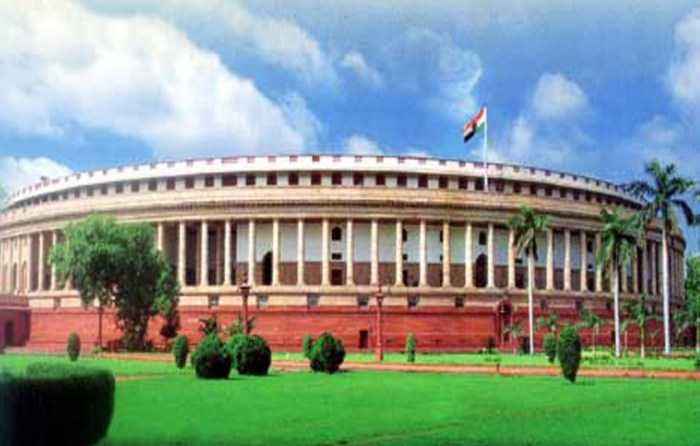5 reasons why the common Indian investor is averse to equity

FY 2014 - 2015 was a great year for mutual funds with equity funds seeing record inflows. Undoubtedly this is very good news for the industry and the equity market. However, if one looks at the big picture, only about 2% of household savings in our country is allocated to equity. Compare the allocation of equity in our household savings with that of the US, where nearly 45% of household savings is allocated to equity. In this blog we will explore, why the common Indian investor is averse to equity investment.
Indian stock markets are highly volatile:
Relative to more mature markets, the Indian stock market is highly volatile. Daily swings of 2 – 3% are not uncommon. The volatility of the Sensex, measured in terms of annualized standard deviation, over the last 5 year period is 21%. For the broader market the volatility is even higher. The annualized standard deviation of S&P 500 over the last 5 year period is only about 13%. This implies that our market is almost twice as volatile as the US market. Even compared to other emerging markets, the volatility of Indian stock markets is higher than the average of the emerging markets. Since investors tend to associate volatility with risk, the widespread perception is that, equities are very risky. From a long term perspective, volatility notwithstanding, the Sensex has given over 16% compounded annual return over the last 10 years. However, the fear of loss of capital, keeps most investors away from equity markets.- Retirement planning in India is associated with risk free investment: Employee provident fund, public provident fund, life insurance policies, post office savings schemes are the investment options commonly associated with retirement planning in India. All these investments are seen as risk free investment, and retirement planning as such in India is usually associated with these investments. In reality, the return from these investments over the long term cannot keep pace with inflation. As a result, many retirees face financial distress in their advanced years and have to be dependent on their children. The broader problem in our society is that, retirement planning is not one of the high priority financial objectives for most investors. As the finance minister articulated in his budget speech, we are largely a pension-less society. The additional
र50,000 tax saving for National Pension Scheme is certainly a step in the right direction but much more needs to be done. Investors have a preference for assured return products:
The average investor has a preference for assured return products. A large portion of the investor’s savings goes to his or her fixed deposit and recurring deposit accounts. People often park their funds in fixed deposits for 3 years or more, even if they do not have any specific use for it after the maturity. This preference may have its roots in the Indian culture, where “saving for a rainy day” is one of the age old cultural doctrines. Good financial planning practice requires setting up a contingency fund to meet unforeseen circumstances like temporary loss of employment or sudden large expense, but optimal asset allocation is also a very important principle of financial planning. The post tax returns from fixed deposit can be lower than the inflation rate and therefore may fail to meet long term financial goals. The desire for higher assured returns, sometimes leads gullible investors to invest in dubious schemes assuring high interest rate. Large numbers of investors have lost their capital by investing in dubious chit funds and other schemes. We keep hearing about these cases time and again over the years, yet investors still fall prey to these dubious schemes.- Investors have preference for physical assets like gold and real estate: While historically Indian investors had a preference for physical assets, the trend has been strengthening over the last 5 years. Percentage of savings invested in physical assets like gold and real estate has gone up from around 50% in 2010 to nearly 68% in 2013. Culturally, we have an affinity to gold, land and real estate. Physical assets are perceived to be much safer than financial assets. The perception, however, is quite erroneous. Gold is traded on commodity exchanges and its price fluctuates every day. In fact, the price of gold has been declining since 2012. In the last 3 years gold price has fallen over 20%, while the Sensex has gone up over 60%. While gold price is not as volatile as equity price, the notion that gold is a safe investment is not correct. Many real estate investors believe that the price of a property can never go down. The reality is different. Real estate prices are in a declining trend in many cities across India. There is a vast amount of over-supply of real estate in many areas. Even where investors sold their property at a profit, the real return to investor after factoring in interest and all other costs can be quite low (please read our article, Is return from Real Estate really that high). Since we can see, touch and feel physical assets, we tend to get involved with these assets at an emotional level. Investment in these assets is not driven by purely financial considerations but also personal likes and dislikes, taste and social considerations.
Lack of financial planning:
Most investors do not have any financial plan, formal or informal. They invest mostly on an ad-hoc basis, based on advice of family members, relatives, friends and neighbourhood agents. Consider these statistics. Total equity investment, including direct equity investment and mutual funds, made by retail investors in India in FY 2013 – 2014 was around USD 6.1 billion. Let us compare this with the total life insurance premium in FY 2013 – 2014. In dollar terms, the total life insurance premium collected in FY 2013 – 2014 was around USD 50 billion, that is almost 9 times the size of the retail investment in equities. Around 90% of the life insurance premiums were from traditional (non ULIP) plans. Investors are locked into these life insurance policies for the long term and therefore will continue to pay the premium till the maturity of their policies, which can be 15 to 20 years. As a consequence investors have a lower investible surplus to allocate to equities and fixed income assets. On the other hand, as society we are still vastly under insured. This shows that the most investors do not have a financial plan, which takes care of their life insurance, health insurance and investment needs.
Conclusion
In this blog, we have explored a few reasons why the common Indian investor is averse to investing in equities. If more domestic savings flow to equities, then our stock market will be less dependent on FII flows and the volatility will go down. Lower volatility will attract more domestic savings flow into equity, creating a virtuous cycle. The mutual fund industry has invested considerable amount of resources in improving investor awareness. However, it seems that a lot more needs to be done. The Government has a very important role to play through the formulation of appropriate policies to encourage investment in equities. Some important measures have like increase in 80C limit, additional tax savings for NPS and the Black Money Law have been announced in the last 2 budgets. Hopefully, they will have a positive impact on attracting domestic savings to equities. Last, but not the least, financial advisors who provide the last mile connectivity to the investors, will also have to play a very critical role in this initiative.
Queries
-
What is the benefit of mutual fund STP
Aug 29, 2019
-
How much to invest to meet target amount of Rs 2 Crores
Aug 26, 2019
-
Can I achieve my financial goals with my current mutual fund investments
Aug 24, 2019
-
Can you tell me return of various indices
Aug 19, 2019
-
What would be the post tax return on different investments
Aug 18, 2019
-
Which Principal Mutual Fund scheme will be suitable for my retirement corpus
Aug 16, 2019
-
What is the minimum holding period for availing NCD interest
Aug 4, 2019
Top Performing Mutual Funds
Recommended Reading
Fund News
-
Axis MF launches Axis Nifty Bank Index Fund
May 3, 2024 by Advisorkhoj Team
-
Axis Mutual Fund Launches Axis Nifty Bank Index Fund
May 2, 2024 by Axis Mutual Fund
-
Groww Mutual Fund launches Groww Nifty Non-Cyclical Consumer Index Fund
May 2, 2024 by Advisorkhoj Team
-
Aditya Birla Sun Life Mutual Fund launches Aditya Birla Sun Life Nifty PSE ETF
May 2, 2024 by Advisorkhoj Team
-
Aditya Birla Sun Life Mutual Fund launches Aditya Birla Sun Life Fixed Term Plan Series UU: 98 Days
Apr 30, 2024 by Advisorkhoj Team













